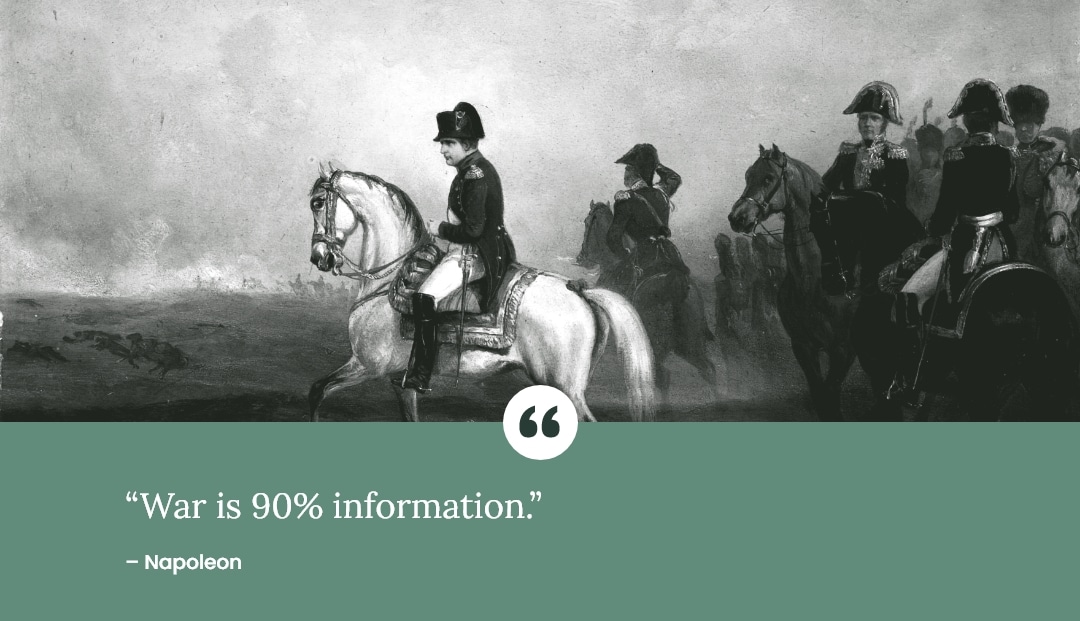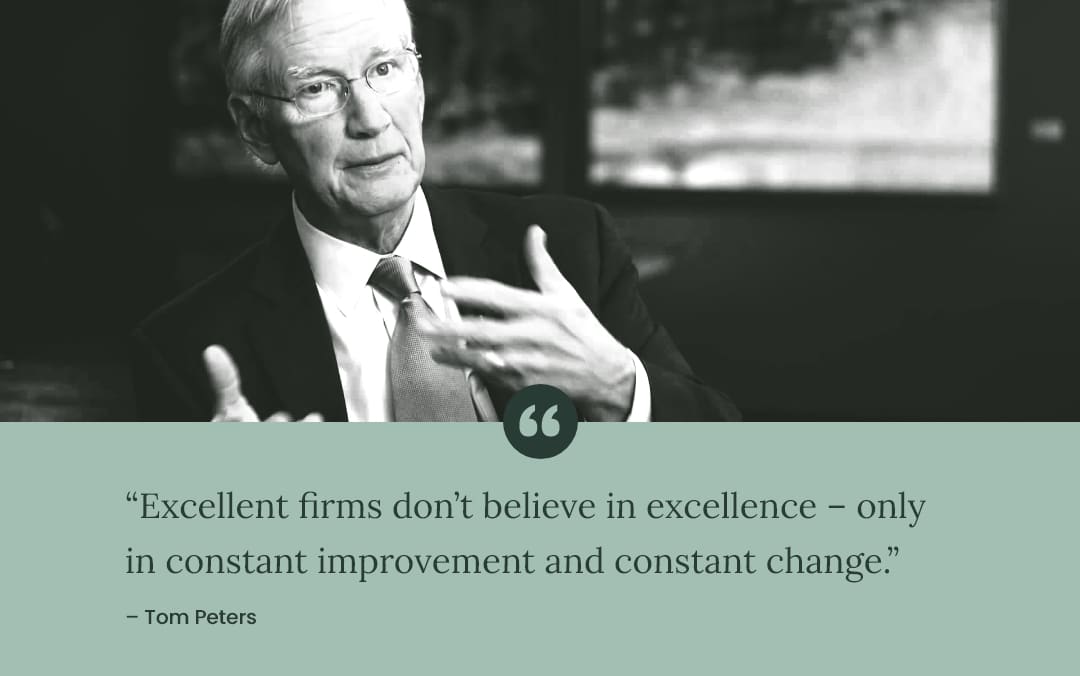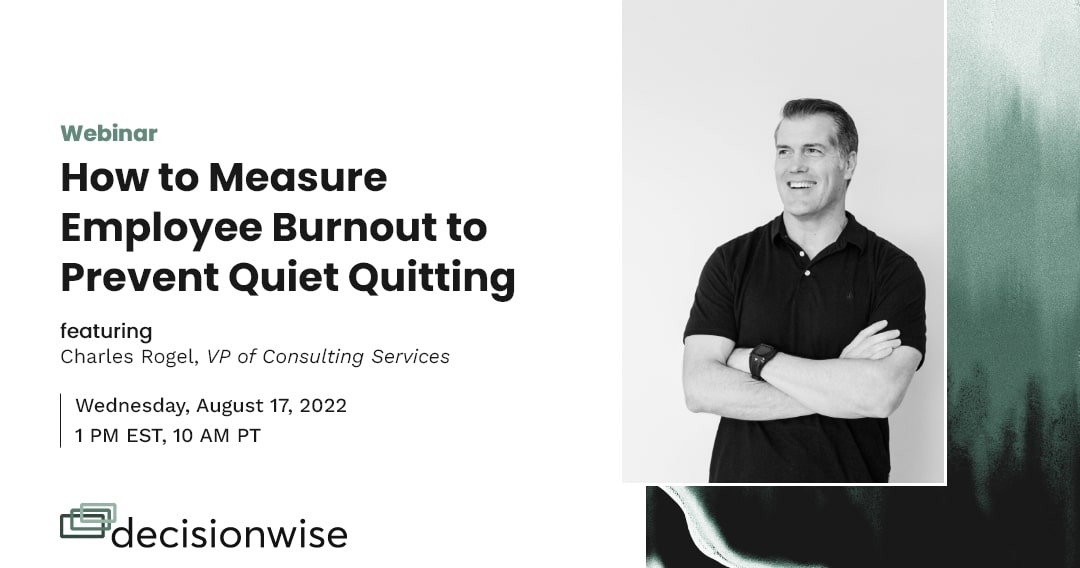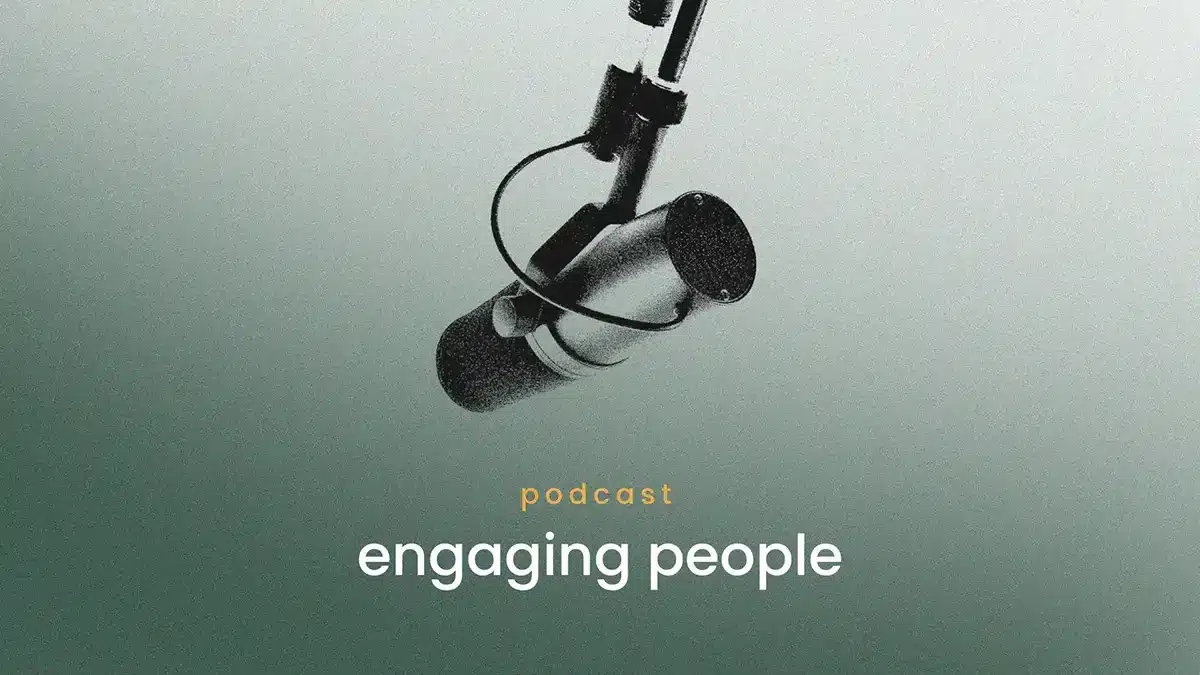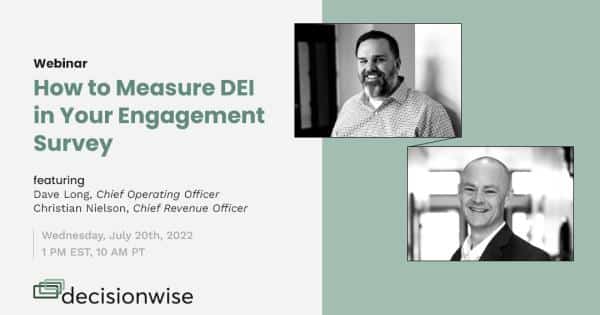Tidbits
The keyword in this quote is the word “prolonged.” It takes time and patience.
Good decision-making is impossible without reliable information. How reliable are your feedback loops?

So true! Excellence is an outcome of a sincere effort to constantly improve, and, of course, feedback is a necessary ingredient.
Brilliant in the Basics: After Action Reviews (AARs) and 360 Degree Assessments
In keeping with our theme– the importance of feedback in professional and organizational development – today’s brilliant in the basics section focuses on the importance of creating a simple process to analyze the feedback you will receive throughout your career. A source of creative inspiration comes from what the United States military calls After Action Reviews (AARs). In the mid-1970s, the U.S. Army made AARs standard operating procedure. They were adopted in order to capture lessons from their various training exercises, and a crucial goal was to make reflection and learning routine.
The military’s AAR process can be formal or informal, but four key questions should be addressed:
- What did we (or I) set out to do?
- What actually happened?
- Why did it happen?
- What are we going to do next time?
In addressing these questions, 25% of the time should be allocated to questions one and two, with another 25% going to the third question. The last question should be given at least 50% of the time.
When thinking about a business leader’s 360 Degree Feedback, we might use four similarly styled questions and follow the AAR time allocation suggestions.
- What is my key role at my organization, or where do I add the most value (What did I set out to do)?
- According to my 360 Degree Feedback, how have I performed in that role (What actually happened)?
- Why did this happen?
- What am I going to do next time?
This simple framework is great way for participants and coaches to process and analyze 360 Degree Feedback; with a key purpose being: How can I make reflection and learning routine?
Featured Discussion: Why 360 Degree Feedback is Vital in Improving the Employee Experience
While we sometimes focus on organizational activities when it comes to the employee experience, the stark reality is that your organization’s employee experience is a direct reflection of the leaders who make the experience either amazing or less than desirable. Our research is clear: The heart of the employee experience is the key intersection between supervisor and employee. Hence, amazing employee experiences are built by strong leaders who understand and listen to their employees. We call this “Leader Driven Experience.”
Consequently, a good way to improve leader driven experiences, and the employee experience at large, is to provide leaders with candid, accessible, and timely feedback. And the best tool for this job is a 360 Degree Feedback assessment.
What is 360 Degree Feedback?
During the 360 Degree process, the participant (the person receiving the feedback) and a group of raters (those providing feedback) answer specific questions about the participant’s working style. Raters are chosen from those with whom the leader works day-to-day and typically include a supervisor, direct reports, peers, coworkers, customers, etc. Results are aggregated so that no individual scores are shown except for those from a person’s direct supervisor. Ideally, the report is provided to the participant during a coaching session with an internal or external coach who helps the participant interpret the results and create a personal development action plan.
Key Benefits from 360 Degree Feedback
When 360 Degree Feedback is properly accepted and implemented, there are 9 potential benefits that will helps make front-line leaders stronger.
Increases Self-awareness
Self-awareness means understanding your personality, working style, leadership and management approaches. 360 Degree Feedback is an excellent tool help you assess how you are doing in all these areas, with unvarnished input from direct reports, supervisors, and peers.
Clarifies Behavior
The very act of evaluating behaviors conveys what behaviors are important to the organization and to you as a leader.
Measure “The How”
Opposed to measuring only “what” gets done, 360 Degree Feedback considers “how” things get done. 360 Feedback assessments measure skill and style. By focusing on process, you are giving yourself the best probability of creating the desired outcome.
Promotes Constructive Dialogue
Dialogue is the first step in moving from measurement to improvement. Ideally, this dialogue would explore strengths and weaknesses and continue with goals and a plan for improvement.
Improves Working Relationships
Performance feedback is something that is often one-sided or altogether missing. By introducing a reciprocal exchange of feedback into a relationship, another touchpoint for support and trust is created.
Encourages Personal Development
Honest and reliable feedback is necessary to test perceptions and expose blind spots. 360 Degree Feedback is a positive disruptor that forces an individual to examine how others experience them in the workplace.
Increases Accountability
The enemy of accountability is ambiguity. You can’t tell someone to “be a better leader” without providing specifics. 360 Degree Feedback assessments clarify behaviors and allow you to make a judgment on whether that behavior has been demonstrated.
Increases Employee Engagement
Establishing a culture of feedback is essential to an employee feeling heard and having a sense of belonging at the organization. Expecting leaders to engage in the feedback process helps reinforce organizational values of fairness, respect, psychological safety, and inspiring team members to do their best.
Enhances Performance
360 Degree Feedback is one of the most powerful tools in a leader’s personal development arsenal. But it is only effective if participants are provided proper support and held accountable to their commitments. It makes little sense to take a 360 Feedback assessment without a follow-up plan on how to use the results.
Conclusion
As stated, the larger employee experience is built upon thousands of micro employee experiences, which are, in large part, a reflection of the strength of each team leader. Strong leaders deliver better experiences. Positive experiences equate to a winning organizational employee experience.
What’s Happening at DecisionWise
UPCOMING WEBINARS
DecisionWise will be hosting two webinars this month! Our first webinar will provide an update on our coaching app and how it can help your organization save time and money. The second will feature how to prevent quiet quitting by measuring employee burnout. Times and registration details are listed below!
This webinar qualifies for HRCI and SHRM credit.
NEW DECISIONWISE CONTENT
Check out our latest publications:
- Tracy Maylett, CEO, DecisionWise, publishes “Giving Feedback to Someone Who Lacks Self-Awareness”, featured in Forbes magazine.
- Dave Long, COO, DecisionWise, publishes a new white paper, “The Best Questions to Ask on Your Next Employee Engagement Survey”
HR News Roundup
Here are some other great tips and resources from the past two weeks, curated to save you some time.
- Surveys say: Employers leaning more into hiring those with skills versus experience (USA Today)
- How Organizations Can Craft Great Employee Experiences During Economic Downturns (Forbes)
- Creating “alpha”: The changing role of the modern CHRO (peoplematters)
- Why this company ditched its 4-day workweek (Fast Company)
- Setting the tone: Engaging leadership leads to engaged, efficient employees (StudyFinds)
- How to Run Employee Town Hall Meetings Post-Pandemic (SHRM)
- Why you need to prioritize UX/UI design in your employee experience (Fast Company)
- Keeping Hybrid Employees Engaged (HBR)


